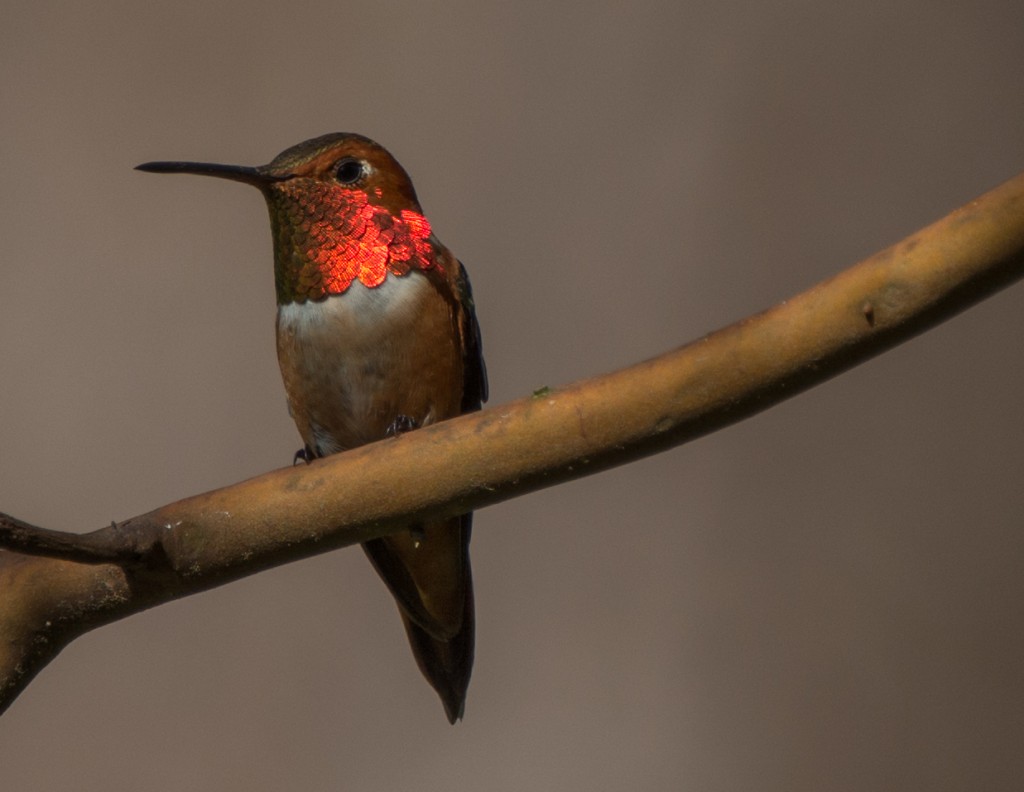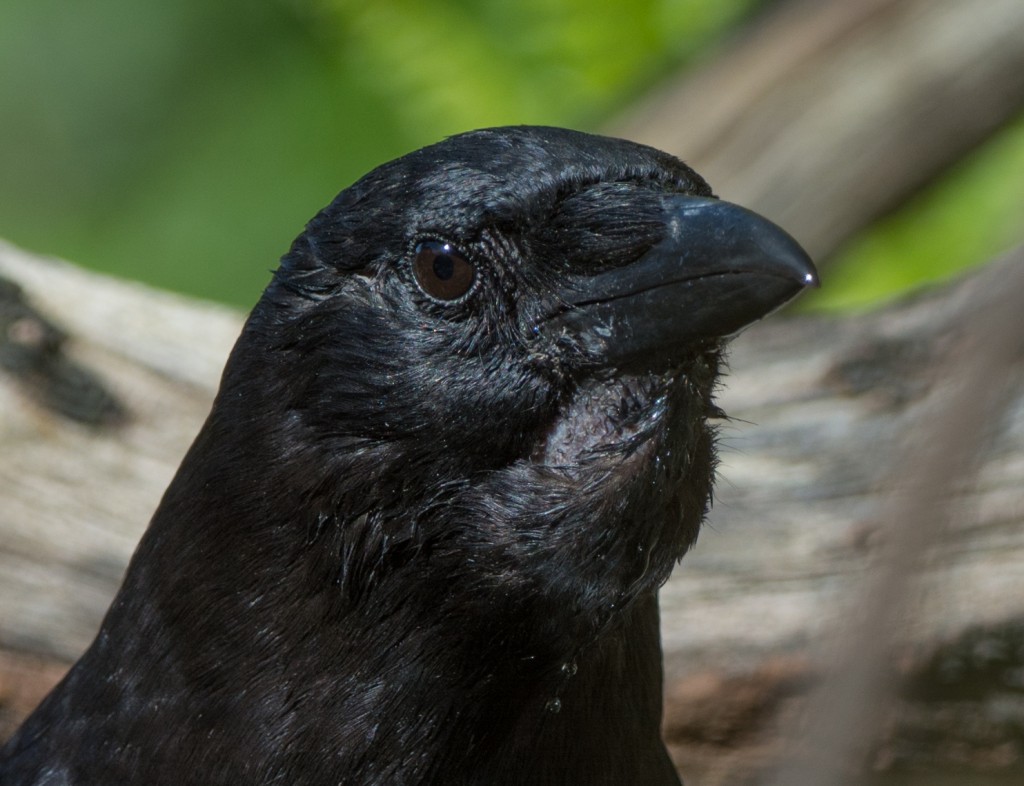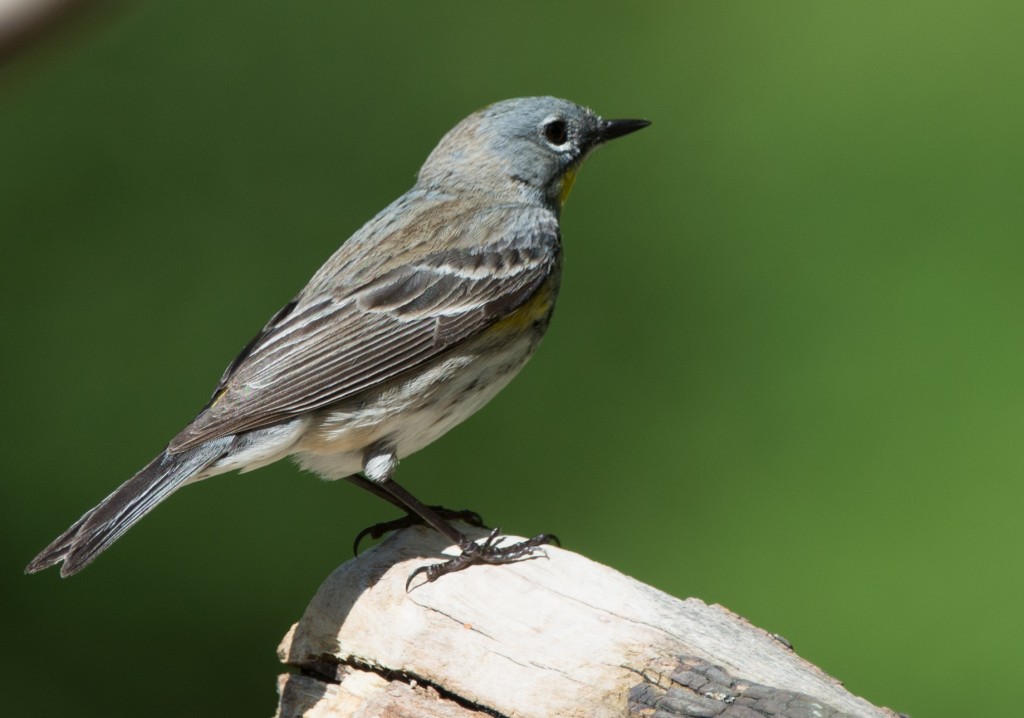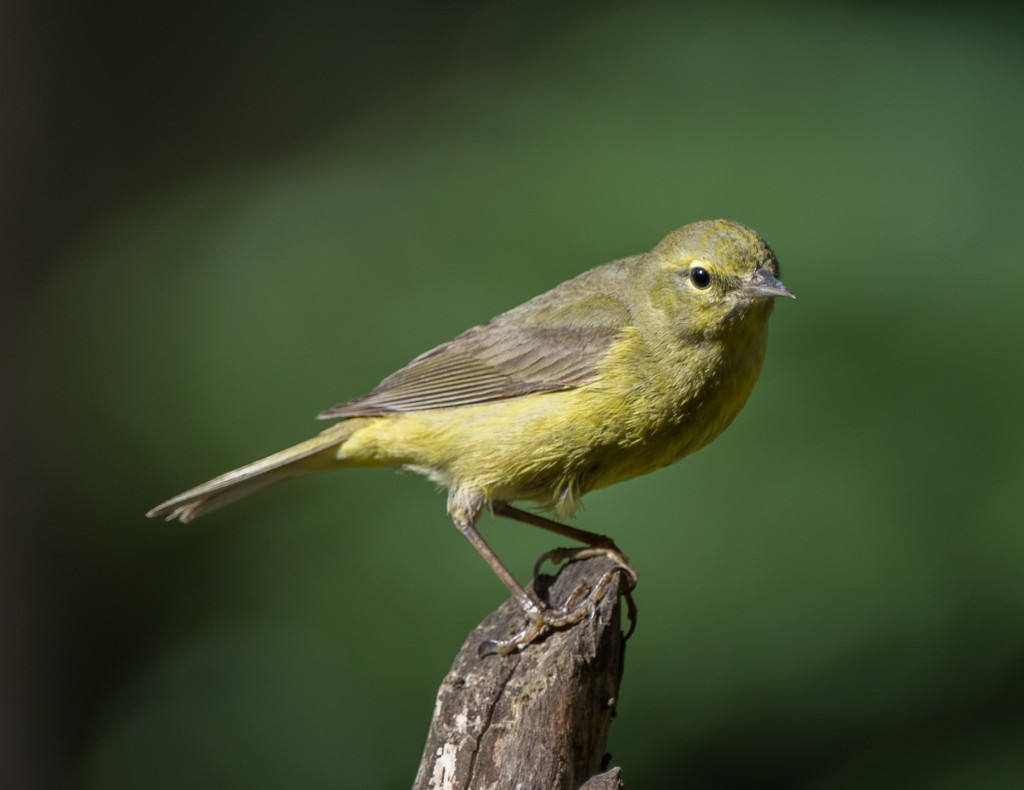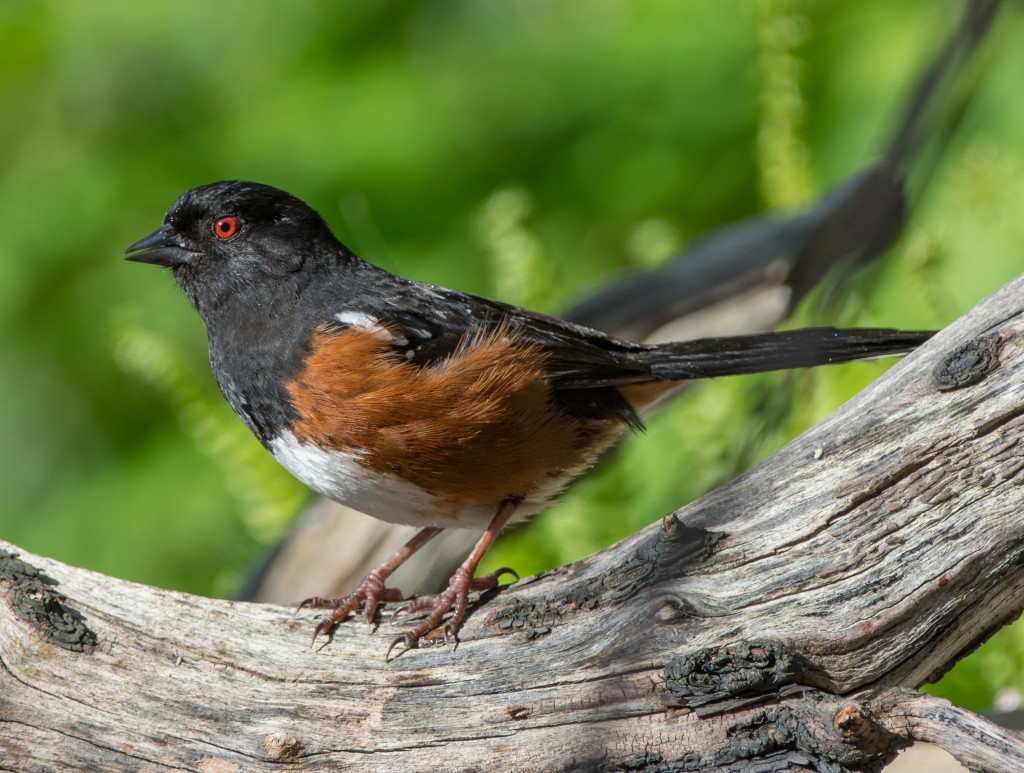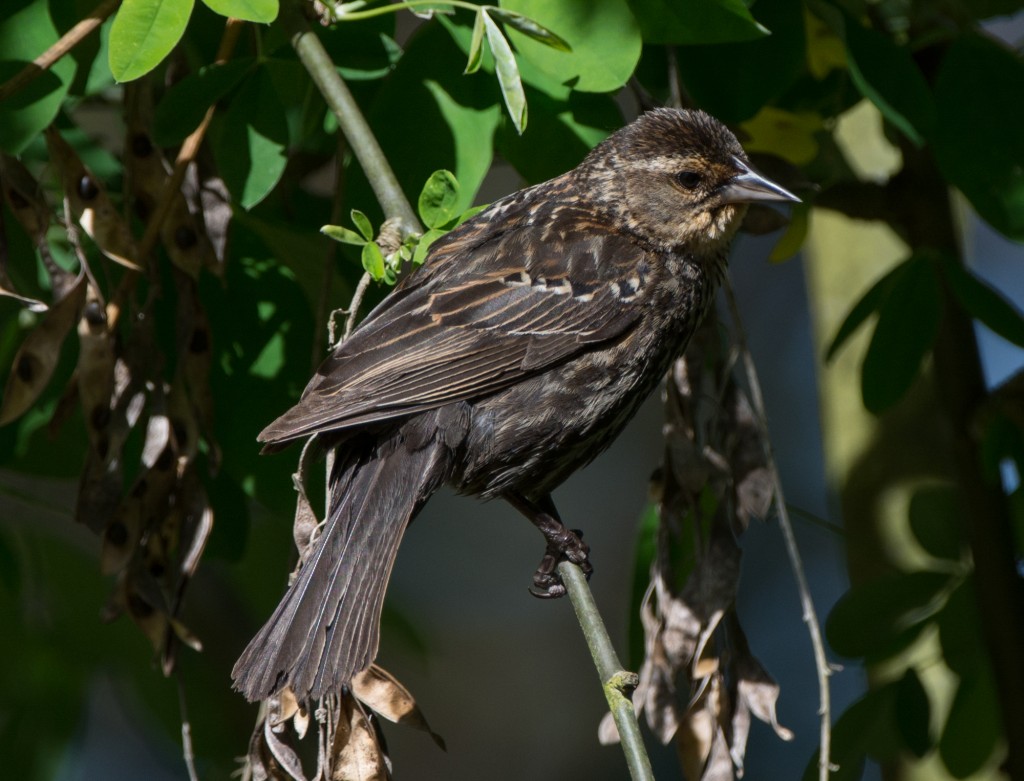I’m overwhelmed with photo projects so I’m just going to throw together a few photos, all of which were taken in my yard on Tuesday, May 13.
We have a good many hummingbirds in the yard, with both male and female Anna’s and Rufous hummingbirds. I presume the male Anna’s is the one that overwintered with us, but the following photo is of the male Rufous hummingbird.
This crow brought food into the water feature, dipped it in the water and then shifted it to its craw, where food can be stored…. probably for taking to young. I’ve noticed that the crows dip food in water during the spring, probably as a way of softening some of it and also getting moisture to the young. If you look carefully you can see that the crow’s craw (throat area under the beak) is bulging with the food.
While I was in the yard I received visits from two warblers, both of which can occasionally be seen here in the winter. First a rather pale male Yellow-rumped warbler of the Audubon’s race. (You’ll have to take my word for it since the identifying markings as to race and sex are not visible in this photograph!)
And next, the nondescript Orange-crowned warbler, one of which has been a daily visitor for the past wee or so.
While I was photographing the warbler a Spotted towhee ventured into the water feature (a fairly rare occurrence!) and spent a long time bathing. I obtained a large number of photographs and retained sixteen… I just can’t bring myself to discard any of the ones I have retained. Click on this bird’s plumage and look at the incredible detail!
And finally, I photographed this female Red-winged blackbird on one of her many trips to our hulled sunflower feeder. The blackbirds have nests in a small pond about two blocks from our house (as the proverbial crow flies) and during the breeding season only they make many hurried trips directly from their nesting area to our feeders. My theory is that by visiting our feeders it allows them to forgo the food foraging that would normally be necessary and they are thereby able to spend more time guarding their nests.

